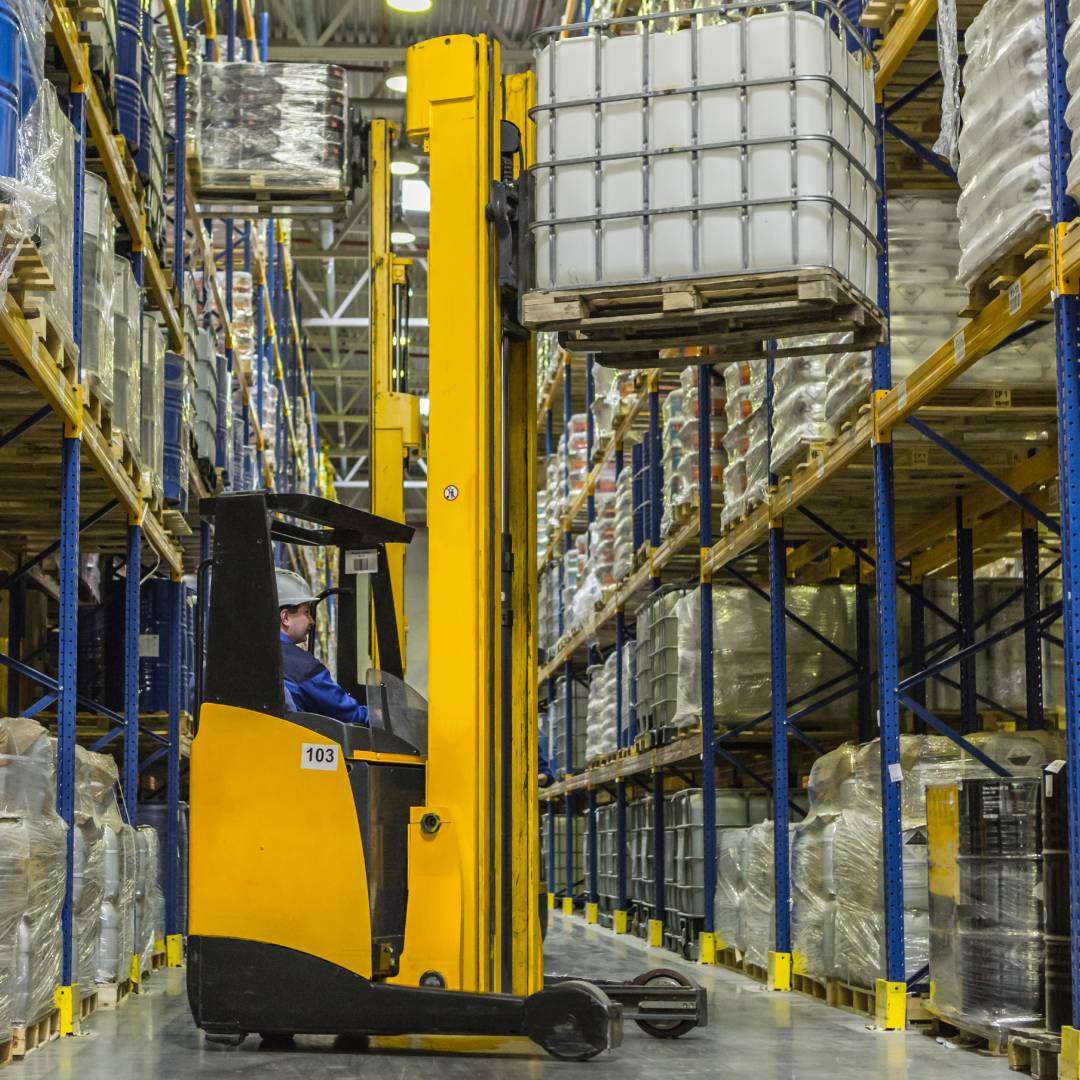What is a stacker in warehouse?
A “stacker” in the context of a warehouse typically refers to a type of material handling equipment used to move and stack goods, pallets, or containers within a warehouse or distribution center. Stacker machines are designed to efficiently lift and place items onto shelves or racks, making the most of vertical storage space in a facility. They are commonly used in settings where space optimization is crucial, and manual stacking or lifting would be impractical or inefficient. “stacker” usually also refers to a piece of material handling equipment that is designed to lift, move, and stack pallets or other heavy loads. It is used to efficiently utilize vertical storage space by stacking items on shelves or racks. Stackers are commonly used in warehouses, distribution centers, manufacturing facilities, and other industrial settings to streamline the movement and storage of goods.
Stackers are commonly used in warehouses for tasks such as:
Stackers are commonly used in warehouses for a variety of tasks that involve the efficient movement, stacking, and organization of goods. Some of the tasks that stackers are used for include:
- Stacking and Storing: The primary task of stackers is to lift and stack pallets, containers, or other types of loads onto storage shelves or racks. This maximizes vertical storage space and helps in better organization of goods.
- Order Picking: Stackers are used to retrieve items from high shelves for order picking. This reduces the need for manual handling of goods and improves the speed and accuracy of order fulfillment.
- Loading and Unloading: Stackers are employed to load and unload goods from trucks, containers, or other transportation vehicles. This ensures efficient transfer between the warehouse and external transportation.
- Short-Distance Transport: Stackers are suitable for moving goods within a warehouse over short distances. They are particularly useful for navigating narrow aisles and confined spaces.
- Inventory Management: By stacking goods in an organized manner, stackers contribute to efficient inventory management. They help ensure that items are easily accessible and can be tracked accurately.
- Space Optimization: Stackers help make the most of available space by utilizing vertical storage. This can be especially valuable in warehouses with limited floor area.
- Reducing Manual Labor: Stackers reduce the need for manual lifting and stacking, which can lead to improved safety for workers and a decrease in physical strain.
- Bulk Storage: They are used for stacking large quantities of goods or materials in a systematic manner, allowing for easy access when needed.
- Work-in-Progress Handling: In manufacturing or assembly environments within warehouses, stackers can be used to move work-in-progress items to different stages of production.
- Accessing Hard-to-Reach Areas: Stackers allow access to areas that might be difficult to reach otherwise, such as high shelves or tight corners.
- Maintenance and Repairs: Stackers can also be used for moving heavy machinery or equipment to maintenance areas for repairs or servicing.
- Cross-Docking Operations: Stackers facilitate the quick transfer of goods between inbound and outbound areas, reducing the need for long-term storage.
- Multi-Level Storage: In warehouses with multiple levels of storage racks, stackers are used to access and move items between these levels efficiently.
Overall, stackers play a crucial role in enhancing the overall efficiency, safety, and productivity of warehouse operations by streamlining various material handling tasks.
Choosing the perfect stacker crane for your warehouse involves careful consideration of various factors to ensure that the equipment meets your operational needs, space constraints, and efficiency goals. Here are some steps to guide you through the process:
1. Assess Operational Needs:
- Determine the type of goods you need to store and handle. Consider factors like weight, size, and fragility of the items.
- Evaluate the required throughput or handling capacity. How many pallets or items need to be moved in a given time period?
- Identify the stacking and retrieval heights needed. How high will the stacker crane need to lift items, and how deep will the storage racks be?
- Consider the distance the stacker crane will need to travel within the warehouse.
2. Understand Warehouse Layout:
- Analyze the available floor space and ceiling height. Stacker cranes utilize vertical space efficiently, so having ample ceiling height is essential.
- Take note of any obstructions, pillars, or irregularities in the warehouse layout that might affect the movement of the stacker crane.
3. Automation Level:
- Decide on the level of automation you require. Stacker cranes can range from fully manual to fully automated systems with minimal human intervention.
- Automated stacker cranes often integrate with Warehouse Management Systems (WMS) and can provide real-time data on inventory levels and movement.
4. Type of Stacker Crane:
- Choose between different types of stacker cranes, such as single mast, double mast, or aisle-changing cranes. Each type has its own advantages and limitations.
5. Energy Efficiency:
- Consider the energy consumption of the stacker crane. Energy-efficient models can lead to cost savings over time.
6. Safety Features:
- Ensure that the stacker crane is equipped with safety features such as collision avoidance systems, emergency stop buttons, and sensors to prevent accidents.
7. Maintenance and Support:
- Research the maintenance requirements of the stacker crane. Regular maintenance is essential to keep the equipment running smoothly.
- Check the availability of spare parts and the support provided by the manufacturer or supplier.
8. Budget and ROI:
- Determine your budget for purchasing and installing the stacker crane.
- Calculate the potential return on investment (ROI) based on factors like increased storage capacity, improved efficiency, and reduced labor costs.
9. Supplier Evaluation:
- Research reputable suppliers and manufacturers of stacker cranes.
- Read reviews, ask for references, and evaluate the track record of the supplier in delivering similar solutions.
10. Customization Options:
- Check if the stacker crane can be customized to fit your specific needs, including rack layout, lifting capacity, and control systems.
11. Future Expansion:
- Consider the scalability of the chosen stacker crane system. Will it be easy to expand or modify as your warehouse requirements change?
12. Regulations and Compliance:
- Ensure that the chosen stacker crane meets safety and regulatory standards in your industry and location.
Ultimately, choosing the perfect stacker crane requires a comprehensive understanding of your warehouse’s unique requirements and a careful evaluation of the available options. Consulting with experts in warehouse logistics and automation can also provide valuable insights in making the right decision.
Conclusion –
Choosing the perfect stacker crane for your warehouse is a crucial decision that requires careful consideration of various factors to ensure optimal efficiency, safety, and functionality. By systematically considering these factors, involving experts when needed, and thoroughly researching your options, you’ll be better equipped to make an informed decision about the stacker crane that will best suit your warehouse’s unique needs and contribute to a more efficient and effective operational environment.










